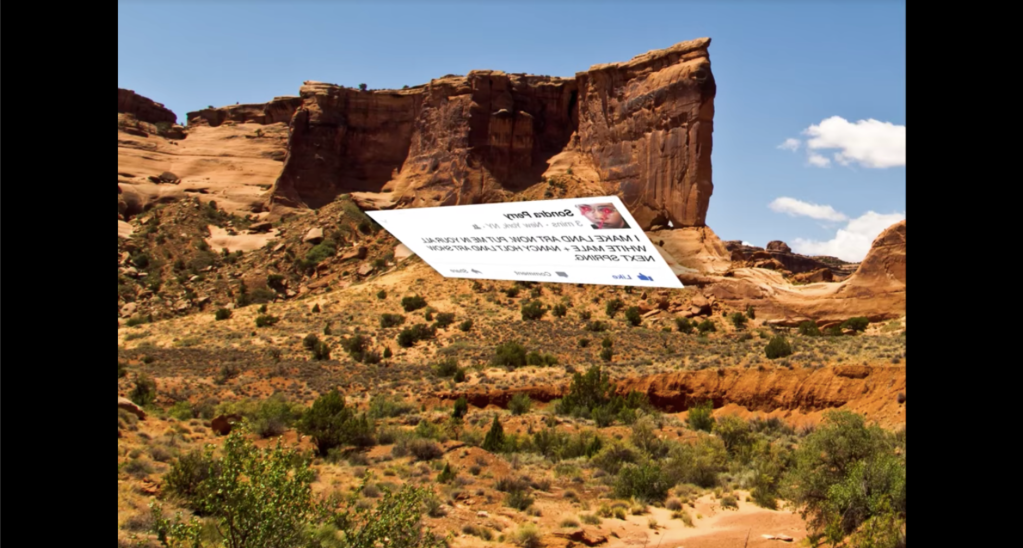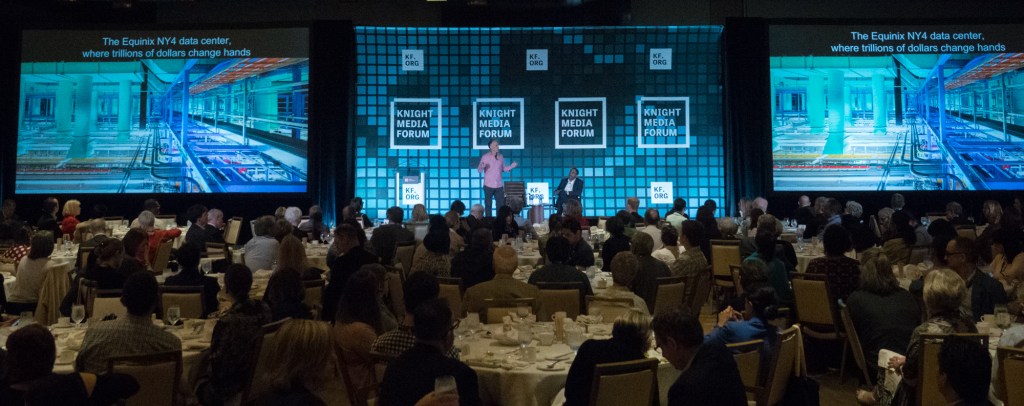
A failure led to big success for the “Godmother of Virtual Reality”
This piece is one of a series that looks at the Knight News Challenge winners, and their thoughts on future trends, on the occasion of the challenge’s 10th anniversary.
VR pioneer Nonny de la Peña still recalls the thrill she experienced in 2010 when she received her first grant from Knight Foundation – a $200,000 award for the collaborative video remix website Stroome, co-founded with John Grasty. With equal clarity, she remembers her growing anguish as the Los Angeles-based project began to stumble, then ultimately failed in 2013. “I lost my fellowship in immersive journalism in 2011 because I was trying to do something so outside the norm at the time,” said de la Peña. “They thought I was crazy.” To keep Stroome going, “I lived off my credit cards,” she continued, telling a classic tale of garage-based entrepreneurship with an (initially) unhappy ending. “That collaborative remix thing was way ahead of its time,” she realizes today.
Fast forward to the end of 2016, when de la Peña won another Knight Foundation grant, this time a $25,000 Innovation Award, for her groundbreaking work in virtual reality journalism. Jennifer Preston, Knight Foundation’s VP/ Journalism, described de la Peña’s work at the time as having “inspired a generation of visual journalists to experiment with and master an emerging technology, and begin to unlock its potential.”
“I can tell you that award got me out of most of my credit card debt” from the Stroome failure, de la Peña continued.
Knight Foundation, however, did far more than help her erase some debt. “What I learned from that first News Challenge grant was invaluable,” de la Peña said. She learned how to bootstrap her current company, Emblematic Group. “I’m about to go out and look for investment, but at this point I’ve got about 16 people working for me, we’re doing a couple a million dollars of business a year, and we’re a real growth company. Without that News Challenge grant to let me think about how to turn journalism into a business that uses virtual technologies, there is no way I would be the success I am today.”
Indeed, that success has earned her the unofficial title of “godmother of virtual reality.” She and Jamie Pallot, formerly digital editorial director at Condé Nast, co-founded Emblematic Group, which made its name in 2012 when the first ‘walk-around’ virtual reality documentary, “Hunger in Los Angeles,” premiered at the Sundance Film Festival. Then, in 2015, things came full circle when Emblematic partnered with the news show “FRONTLINE” to produce a series of virtual reality documentaries, and to craft and distribute guidelines for journalists beginning to work in the medium — all powered by $580,000 in Knight funding.
Looking back at her success relative to other tech firms that were born around the same time, de la Peña said that “Twitter is by far the most extraordinary platform there is journalistically for breaking news” – an opinion that carries weight because of her own 20-year career in traditional print and video journalism before becoming a tech entrepreneur. She offers a recent case in point: “Driving my son to summer camp up to the local mountains here in Los Angeles I could see smoke coming up the mountain. First we put on AM radio, but then we went to Twitter and got way more information. There was indeed a fire, and it was a bad one, and they were rerouting traffic. I got way more information through Twitter that I was getting anywhere else.”
But over the next five to ten years, she sees interfaces like Snap’s that lets you choose stories via a map interface becoming more important in that breaking news role. “When you think about the mapping system that Snapchat has, it’s just beginning to be used. It was the best resource for people in the Houston area to use during the recent floods.”
De la Peña also sees immense potential for VR news gathering, especially as advanced robotics bring the technology directly into the mainstream. She notes that simulated learning and 3D mapping, for everything from driverless cars to everyday homemaking tasks, are driving future chip designs. This in turn will reduce the cost of virtual headsets, which she predicts will someday be as easy to wear as sunglasses are today, and will boast a mix of audio-visual and VR capabilities. Perhaps her original idea for Stroome – a multimedia remix site where journalists and producers can collaborate on projects in real time – was not so crazy after all.
Ed Paisley is the senior director at the Washington Center for Equitable Growth and a former journalist.
-
-
Press Release
-
Community Impact / Press Release
-
Community Impact / Press Release
-
Community Impact / Press Release
-
Community Impact / Press Release
-
-
Community Impact / Press Release
-
-
Community Impact / Press Release
-
Recent Content
-
Artsarticle ·
-
Artsarticle ·
-
Community Impactarticle ·


